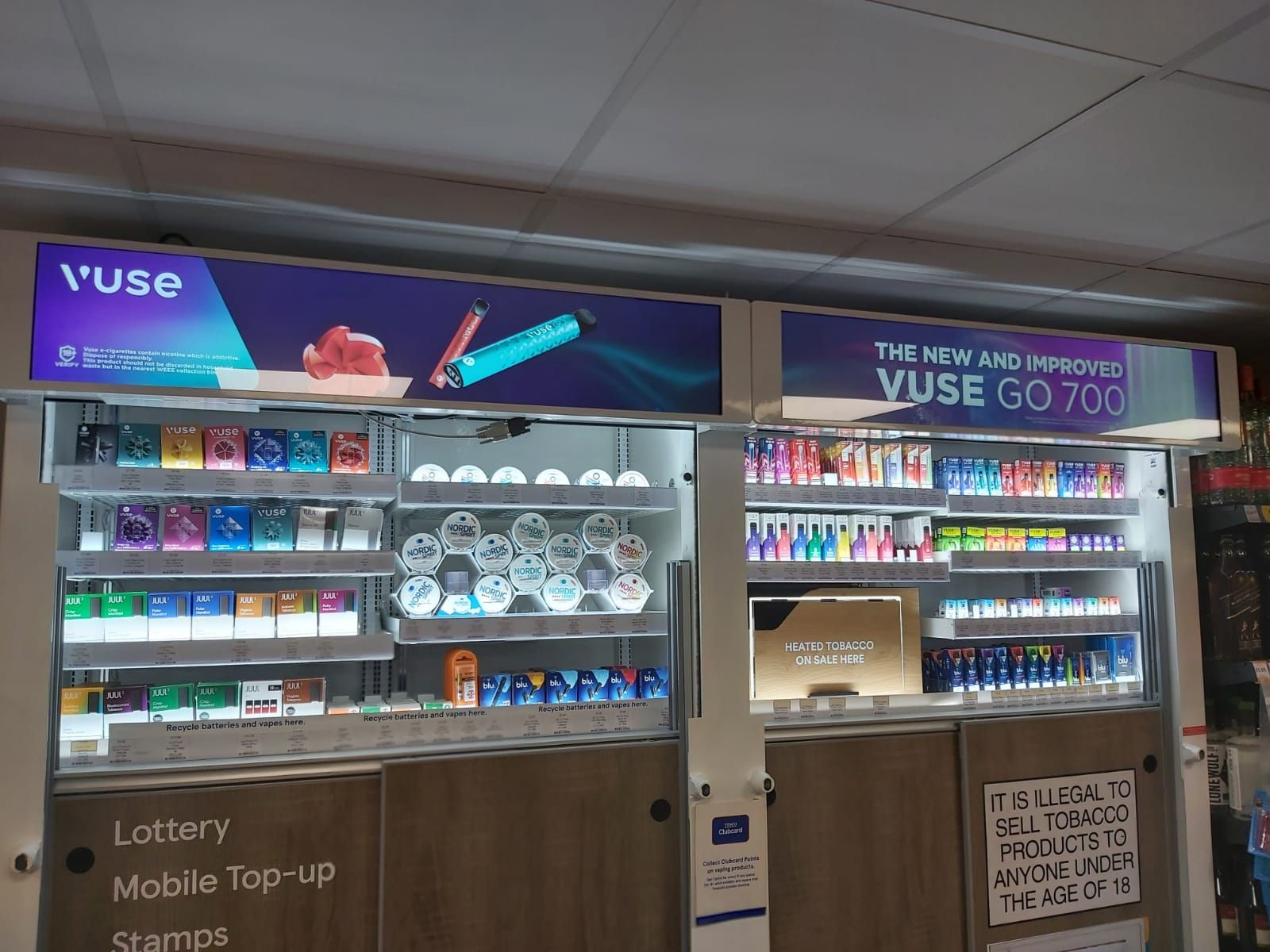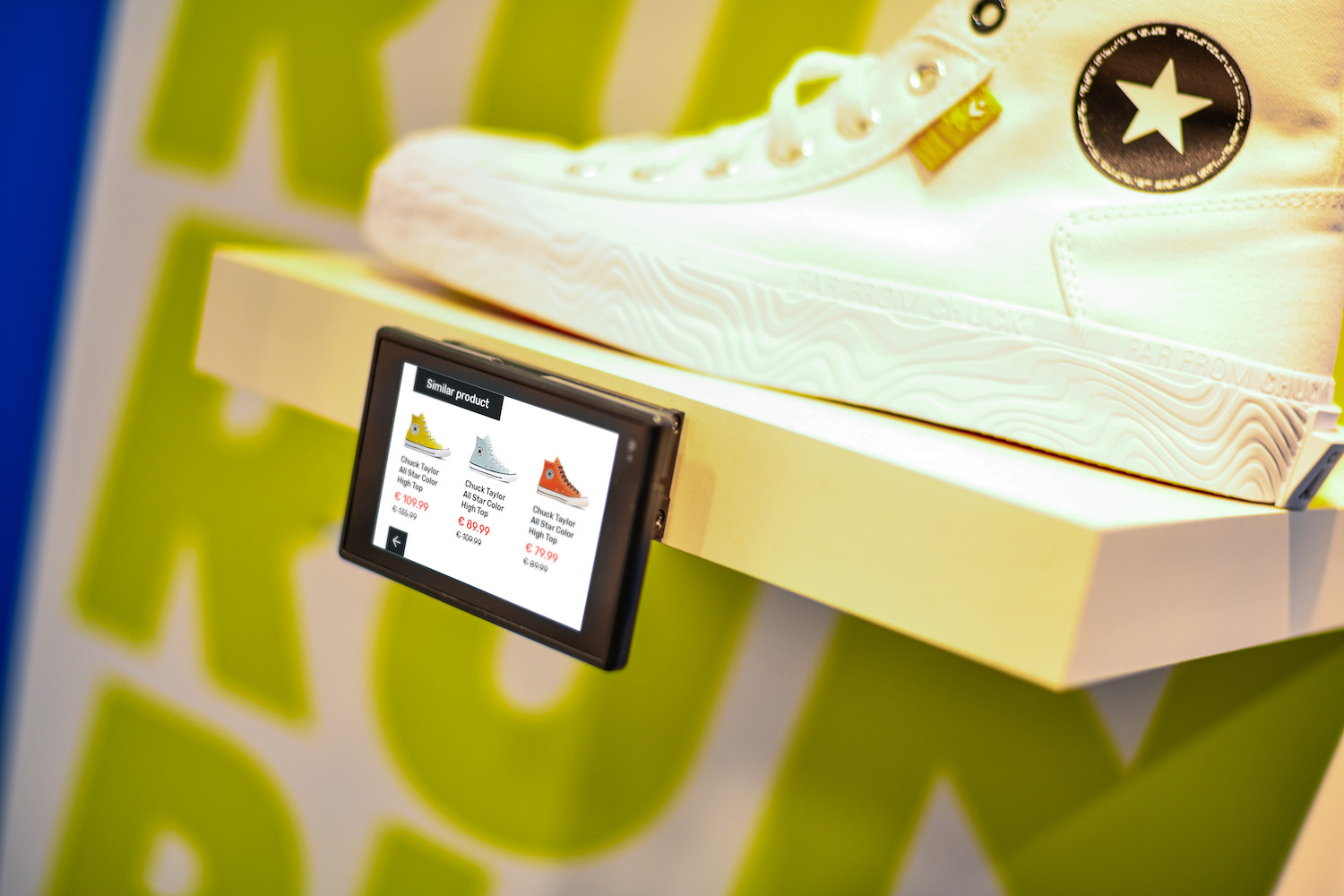Whether you are browsing the aisles of your closest supermarket or walking the stalls of the local market on a Saturday morning, you are almost certain to come across some form of point of sale or point of purchase materials.
Known more commonly among retailers as POS and POP, these tools, when used correctly, are an effective way of drawing the attention of shoppers, directing them to products and, most importantly, generating sales. However, while this may be true, the onus is now on retailers to be more creative with their POS and POP to ensure they appeal to the modern consumer.
Here, Retail Focus sits down with several leading companies within this market to find out about some of the latest trends in POS and POP and what retailers can do to modernise their strategies.
Understand your customers
First up is the Lead Consultancy, which specialises in crafting cutting-edge digital solutions for retail spaces and brands. With a focus on scalability, immersive experiences and simplicity, Lead collaborates with tech, design, and AV firms to enhance customer experiences, part of which includes POS and POP work.
“We do not sell technology as such but help retailers improve customer experience, improve sales processes and help increase sales,” said Mark Leadbitter, global retail tech innovation consultant at Lead. “Our tech strategy decks and proposals help retailers understand their customers and provide technology and POS solutions to help drive improved sales and ROI.”

Continuing with the conversation is Neil Overall, a self-employed business development and brand consultant who works with Lead, among other consultancies, on brand tech. Overall picks out some of the latest key trends for retailers to be aware of when it comes to plotting out POS and POP activity.
Perhaps of no surprise is the growing use of digital integration, with Overall saying there is an increasing use of technologies such as interactive displays, QR codes and augmented reality (AR) to engage customers and provide a seamless shopping experience. Linking in with this is a surge in contactless payments, as well as the use of AI and machine learning for inventory management, customer insights, and personalised marketing at the POS.
On the subject of personalisation, Overall said there is an enhanced use of data analytics to create personalised in-store experiences, with both tailored promotions and product recommendations now becoming more common at the POS. Tying in with this is a greater use experiential retail, with Overall saying creating immersive and engaging in-store experiences that go beyond traditional shopping – such as pop-up shops, interactive product demos and branded events – helping drive sales.
Other areas of note include rising omni-channel synergy to synchronise online and offline experiences to create a cohesive brand experience, as well as sustainability, with Overall saying this will be key moving forward.
“There is a growing focus on sustainable materials and practices in POP and POS displays,” he said. “Retailers are using planet-friendly materials and highlighting their commitment to sustainability to attract environmentally conscious consumers.”
So, how can retailers respond? Overall said there are several steps they can take to bring POS and POP in line with modern trends. These include investing in interactive technologies like AR and VR to provide engaging and memorable experiences, leveraging customer data to deliver highly personalised shopping experiences, offering a wider range of payment methods, and creating spaces that encourage exploration and engagement rather than just transactions.

Furthermore, in line with wider and ongoing trends, Overall recommended: “Maintain high standards of hygiene and safety, which remains a priority for many consumers. This can include contactless payments and sanitised self-checkout stations.
“In addition, consider tailoring the shopping experience to local communities and cultures. This involves understanding local preferences and trends to offer relevant products and services.
“By focusing on these considerations, retailers can create engaging, personalised, and efficient in-store experiences that capture customer attention and drive sales.”
Clear brand identity
As for companies that provide physical solutions, RTC is a global provider of custom store fixtures and shelf management systems. Offering design, development, manufacture and installation, RTC works with retailers across all manner of custom fixture programs.
Group Managing Director for Europe, Paul Higgins said in terms of what retailers should be considering when planning POS and POP activity, she notes how it is crowded and busy in retail spaces, with the onus being on ensuring displays stand out.
“It’s important to hero the product and have clear brand identity,” Higgins said. “An eye-catching display will find an unexpected and creative way to attract the shopper’s attention. Our advice to retailers would be to involve their supply partners as early as possible in the project; once a project is 80% complete, it’s already too late!”

Addressing the issue of key trends, Higgins said certain issues have come to light, with focus areas including the environment, theft deterrence and technology integration.
“Increasingly, eco-friendly and sustainable materials are being used,” Higgins said. “They need to be easily identified by the shopper to demonstrate the brand’s green intent.
“Theft deterrence is also incredibly important right now; our ProfitGuard range has received so much interest recently. In addition, technology is being integrated where possible to make a display more interactive and dynamic.
“RTC takes the time to understand our customers’ brands, values and priorities so that we can communicate this in our design proposals. Our customers are supported by and have access to our global sustainability experts too, which allows them to make informed decisions about projects, product design and material choices.”

Higgins also took the opportunity to highlight recent work that RTC has supported its clients with. Brands working with RTC include Charlotte Tilbury, which has put in place a series of attractive displays to showcase its beauty products, and Space NK, another beauty brand seeking to appeal to consumers.
Evolving market
Another solutions provider in this market is Northbanks, which focuses on retail formats, fixtures and displays, and brand experiences. Founder James North said across the retail sector, POS and POP displays are constantly evolving to keep pace with the changes in consumer behaviour, technology, and market trends.
He picks out several key trends for retailers to be aware of – relational vs. transactional materials; interactive and mobile friendly POS displays; sustainability; and materials modular design.
“At Northbanks, we firmly believe that retailers get best result when they stay relevant to their shoppers,” he said. “Once they have identified the needs, the retailer can facilitate it through a variety of ways.
“This may include interactive and engaging elements including touchscreens and kiosks, personalisation such as customised offers and discount or loyalty programs, visually impactful graphics, or experiential set ups such as live demonstrations and interactive events.

“Northbanks can support retailers by fully understanding their shoppers and champion values that align with them. We can then implement strategies that are relevant to the shoppers, for instance, these might involve a multi-faceted approach which combines our expertise in design, technology, data analytics, and customer experience.”
Offering an example of recent work in this segment, North speaks about a collaboration with jewellery brand Alex Monroe to create a POS kit that aligned with brand values and commitment to ethical practices and environmentally conscious material sourcing. With a shared dedication to sustainability, North said Northbanks crafted a POS kit that embodies these principles.
“Every detail of the kit, and every step of the journey was thoughtfully considered,” he said. “We used sustainable FSC-approved wood to ensure responsible forestry practices. For printing, we selected low-impact inks that minimised environmental harm. We adopted manufacturing processed that used less energy. The pieces were packaged in pre-loved paper and cardboard. The design of the kit is modular, providing flexibility to adapt and expand according to the specific needs of the brand.”
Sustainable future
Finishing this round-up is H.O.L Group, the company behind Candee, an innovator in the retail display industry that specialises in the development and supply of biodegradable bio-polymer products.
Ross Inanc, director of H.O.L Group, said Candee supports retailers by providing innovative, sustainable display solutions to help them meet environmental goals without compromising on aesthetics or functionality. This, he adds, addresses one of the stand-out trends in the POS sector in terms of sustainability.
“Increasing consumer demand for environmentally friendly products has driven retailers to seek out sustainable display solutions,” he said. “Retailers should choose materials and designs that reflect a commitment to environmental responsibility.
“Our biodegradable bio-polymer products offer a green alternative to traditional plastics, helping retailers reduce their carbon footprint. We also offer customisation services to ensure that our displays align with the retailer’s brand identity and marketing objectives.
“Additionally, our team provides expert advice and support throughout the design and implementation process, ensuring seamless integration of our products into the retail environment.”
Offering examples of this in action, Inanc begins with the new Candee Hangers, which were launched VM & Display Show 2024. He said Candee is working with UK moulders to create premium, biodegradable hanger designs for some retail clients. The aim for these retailers, he said, is to not only reduce their environmental impact but also enhance the store’s eco-friendly image.

Candee also recently collaborated with a major beauty retailer to create a custom 3D printed display item to replace the existing trend of ‘PLA’, which he said is not sustainable in any way.
“Our genuine biodegradable option was a success, resulting in a unique and sustainable display solution that attracted significant customer attention,” Inanc said.
In addition, he highlights the growing use of planet friendly promotional displays, with the company now working closely with a large tech brand on a new product launch. A large part of this project required Canddee to develop eye-catching, biodegradable print stands that emphasised the product’s own sustainable credentials.
“These examples showcase our commitment to sustainability and innovation in retail display solutions, helping our clients achieve their marketing and environmental objectives,” Inanc said.
From speaking with four companies very much in the know, it is clear there are several key trends to be aware of when it comes to POS and POP. Whether it is ensuring you are able to connect with the consumer in the most effective way, or appeal to shoppers with a more sustainable approach, there is plenty of food for thought when planning future campaigns.




